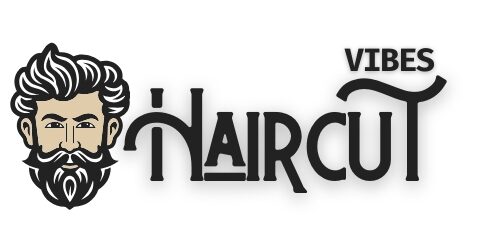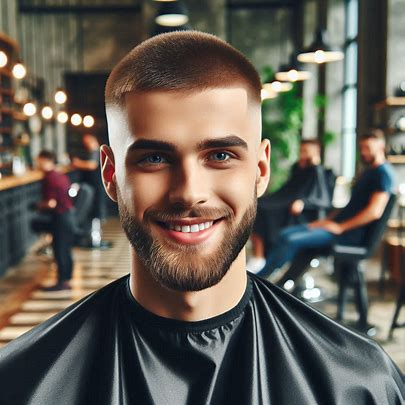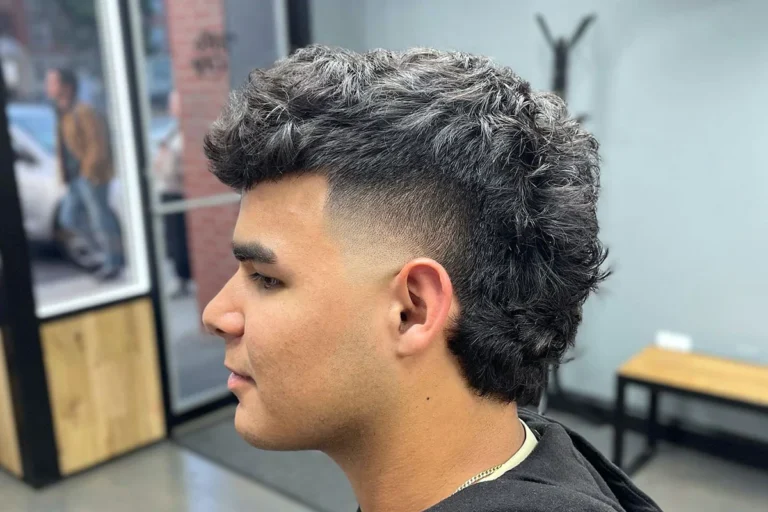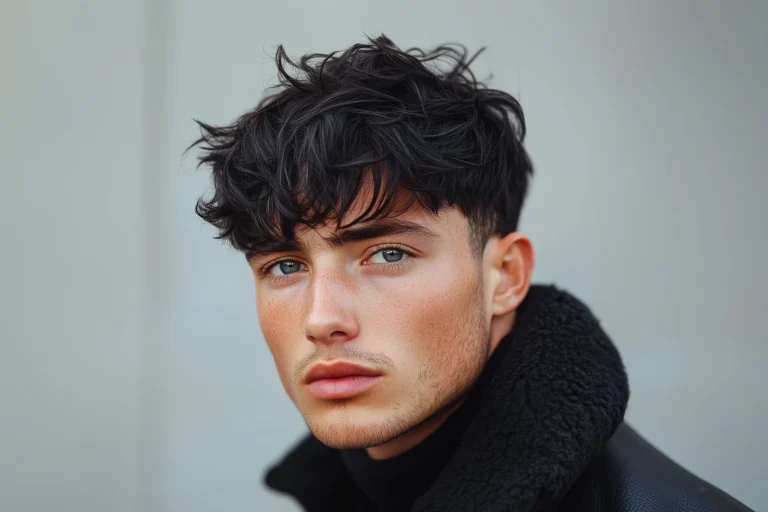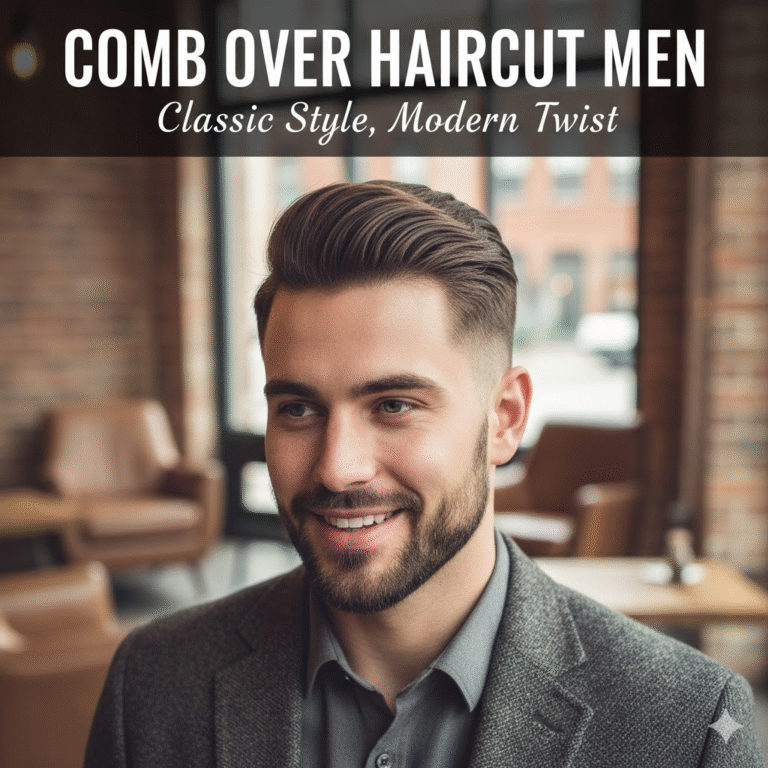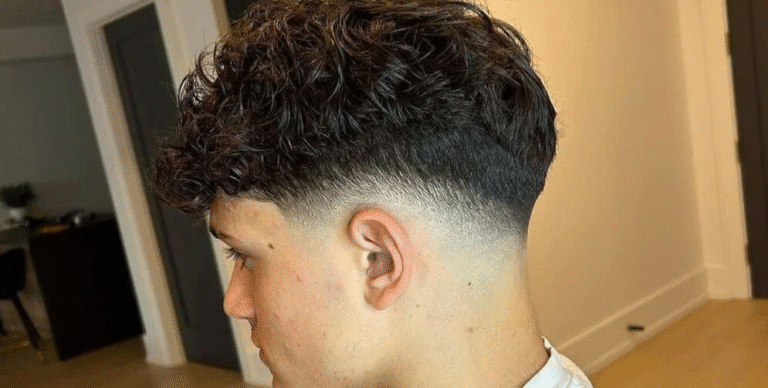25 Easy Edgar Haircut For Men [With Photos]
The Edgar haircut features a high fade on the sides with a blunt, straight-across fringe in the front like middle part cut. Popular among Latino communities, it’s now mainstream across various cultural groups. Works best for straight or wavy hair and square or oval face shapes. Can be customized with various fades, lengths, and design elements
What Is Edgar Haircut?
The Edgar haircut is a bold, blunt-fringe crop paired with tapered or faded sides. Originating within Latino youth culture especially along the U.S. Southwest border—it draws inspiration from the indigenous Jumano bowl-cut aesthetic.
Defined by its straight-across bangs, the top remains the longest section, supported by high or taper fades for added sharpness.
The name “Edgar” reportedly originated from Mexican communities, possibly referring to Edgar Martinez, though exact etymology remains debated among style experts. You might also hear this haircut called “the takuache cut” in some regions, particularly in Latinx communities where it first gained significant popularity.

History and Cultural Significance
The Edgar haircut emerged in mid-2010s, primarily within Latino communities in United States, particularly in Texas and California. This style combines elements of traditional Mexican-American haircuts with modern fade techniques popularized in urban barbershops.
Initially associated with “takuache” subculture (young Mexican-Americans often driving trucks and listening to regional Mexican music), Edgar quickly transcended its origins to become mainstream style choice. This haircut gained momentum through social media platforms like Instagram and TikTok, where barbers showcased their precision skills with distinctive cut.
Celebrity adoption helped propel Edgar into widespread popularity. Latin music artists and sports figures embraced style, giving it visibility beyond regional preferences. Soccer players in particular helped internationalize look, with variations appearing across North and South America.
By 2025, Edgar cut has evolved from niche cultural style to recognized haircut option in mainstream barbershops worldwide, though it still maintains strong associations with its Latin American roots.
25 Types of Edgar Haircuts
The Edgar haircut has evolved into numerous variations to suit different preferences, face shapes, and personal styles. Here are 25 distinct types you can choose from:
1. Classic Edgar
The foundational Edgar featuring a high fade on the sides with a straight, blunt fringe across the forehead. This is the purest form of the style that started it all.

2. High Fade Edgar
Features an extremely high fade that starts almost at the crown, creating maximum contrast with the longer top and fringe.

3. Mid Fade Edgar
A more balanced approach with the fade starting at the middle of the sides, offering a less dramatic transition than the high fade.

4. Low Fade Edgar
The fade begins just above the ears, creating a subtler version of the Edgar that works well in more conservative environments.

5. Skin Fade Edgar
Also called a bald fade Edgar, this version transitions all the way down to bare skin at the bottom, creating the sharpest possible contrast.

6. Taper Fade Edgar
Features a more gradual fade that tapers down smoothly rather than creating dramatic contrast, good for those wanting a softer Edgar look.

7. Drop Fade Edgar
A specialized fade that “drops” behind the ear, creating a curved fade line rather than straight across, adding unique dimension to the cut.

8. Curly Edgar
Designed for naturally curly hair, this version maintains the Edgar structure while working with curly texture on top, creating a softer fringe look.

9. Wavy Edgar
Perfect for those with wavy hair, this style uses the natural wave pattern to add texture to the otherwise straight fringe.

10. Textured Top Edgar
Maintains the classic Edgar silhouette but adds scissors-cut texture throughout the top for movement and a less blocky appearance.

11. Long Fringe Edgar
Features an extended fringe that may hang lower on the forehead, sometimes reaching the eyebrows for a bolder statement.

12. Short Fringe Edgar
A more subtle approach with a shorter fringe that doesn’t extend as far down the forehead, making it more workplace-friendly.

13. Edgar with Line Up
Incorporates precision line work along the temples and forehead, creating razor-sharp edges that enhance the geometric feel of the cut.

14. Edgar with Designs
Features custom line designs, patterns, or artwork shaved into the faded sides, ranging from simple lines to elaborate designs.
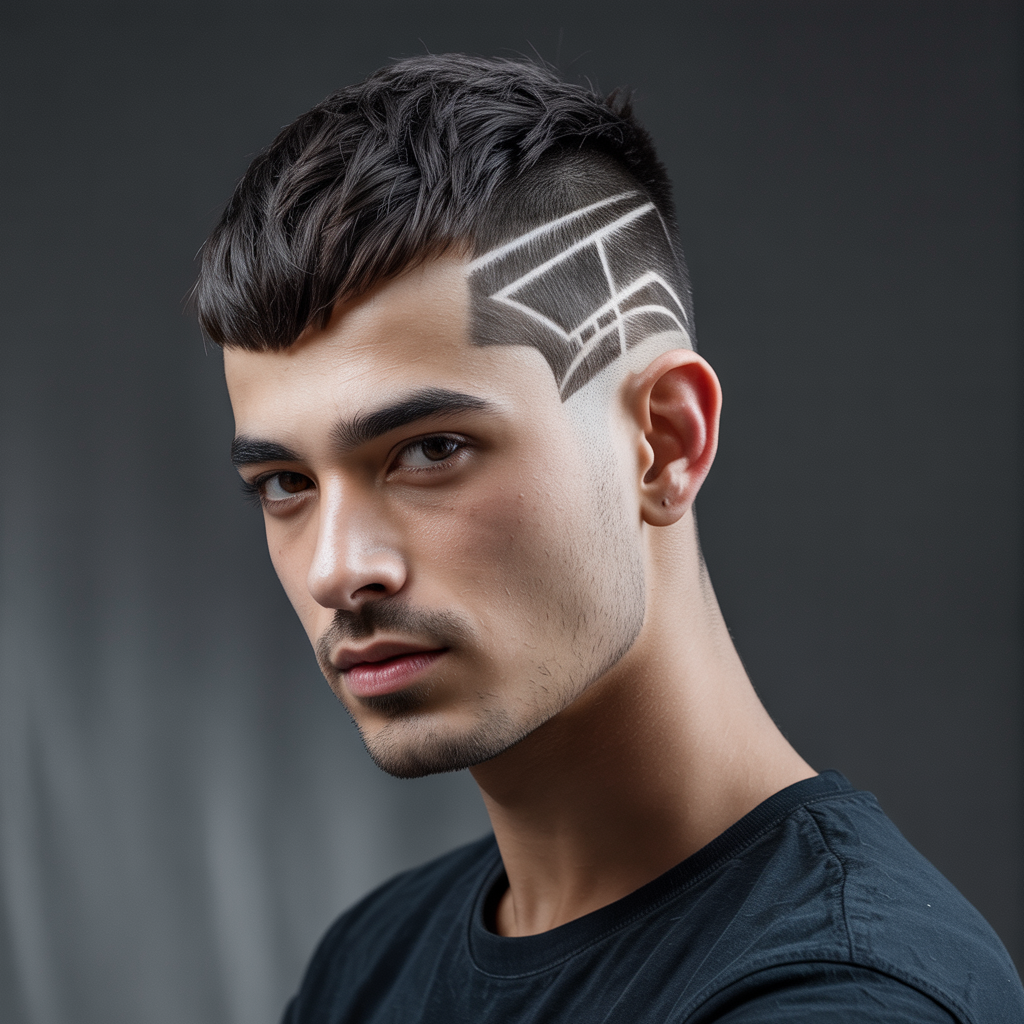

15. Disconnected Edgar
Creates an intentional “disconnect” between the top and sides with no blending between the two sections, emphasizing the contrast.



16. Asymmetrical Edgar
Features an intentionally uneven fringe or asymmetrical side design elements for those wanting to add an edgy twist.

17. Edgar with Hard Part
Incorporates a shaved line (hard part) on one side, clearly separating the longer top from the faded sides.


18. Colored Edgar
The traditional Edgar structure enhanced with hair color—could be natural colors like blonde or bold choices like blue, green, or platinum.

19. Edgar with Undercut
Rather than a fade, this version features a stark undercut with the same length all around the sides, paired with the Edgar’s signature fringe.

20. Messy Edgar
Keeps the structural elements but styles the top in a deliberately tousled, messy way for a more casual, relaxed vibe.

21. Slicked Back Edgar
Maintains the fade and structure but slicks the top hair back rather than forward into a fringe, creating a hybrid style.

22. Edgar with Mullet
A modern fusion combining the front Edgar fringe with a longer mullet section in the back, popular with trendsetters.

23. Edgar with Fade Art
Incorporates detailed artistic fade work on the sides, with multiple levels of fade creating patterns through hair length variation.

24. Mini Edgar
A subtler version with less dramatic length difference between top and sides, and a less pronounced fringe—good for trying the style conservatively.

25. Long Top Edgar
Features significantly longer hair on top while maintaining the Edgar’s signature fringe and faded sides, allowing for more styling versatility.

How to Ask Your Barber for an Edgar Haircut
Walking into the barbershop with clear communication is key to getting exactly the Edgar variation you want. Here’s how to make sure you and your barber are on the same page:
Essential Terminology
Use these specific terms when describing what you want:
- “Edgar haircut” or “Edgar cut” (most barbers now recognize this term)
- “Blunt fringe across the front”
- Specify your fade preference: “high fade,” “mid fade,” “low fade,” or “skin fade”
- Mention “straight across bangs” or “bowl-style front”
Bring Reference Photos
Always bring multiple photos showing:
- Front view of your desired Edgar style
- Side view showing the fade progression
- Back view if relevant (especially for styles like the Edgar with mullet)
- Photos of your chosen variation from the types described above
The Cutting Process
Understanding what happens during the cut helps you know if it’s being done correctly:
- Your barber will start with clean, slightly damp hair
- They’ll section off the top portion that will remain longer
- Fade work begins on the sides and back using clippers with guards of decreasing sizes
- For the fringe, they’ll comb the front hair forward
- The signature straight line across the forehead is cut, usually with scissors for precision
- Details are refined, including line-ups along the temples and neckline
- Texturizing may be done on top if you’re getting a textured variation
Communication Tips
- Be specific about how high you want the fade to start
- Indicate exactly how long you want the fringe (show with your finger on your forehead)
- Mention if you want any special details like line designs or hard parts
- Discuss how much texture you want on top
- Ask questions throughout if you’re unsure about what’s happening
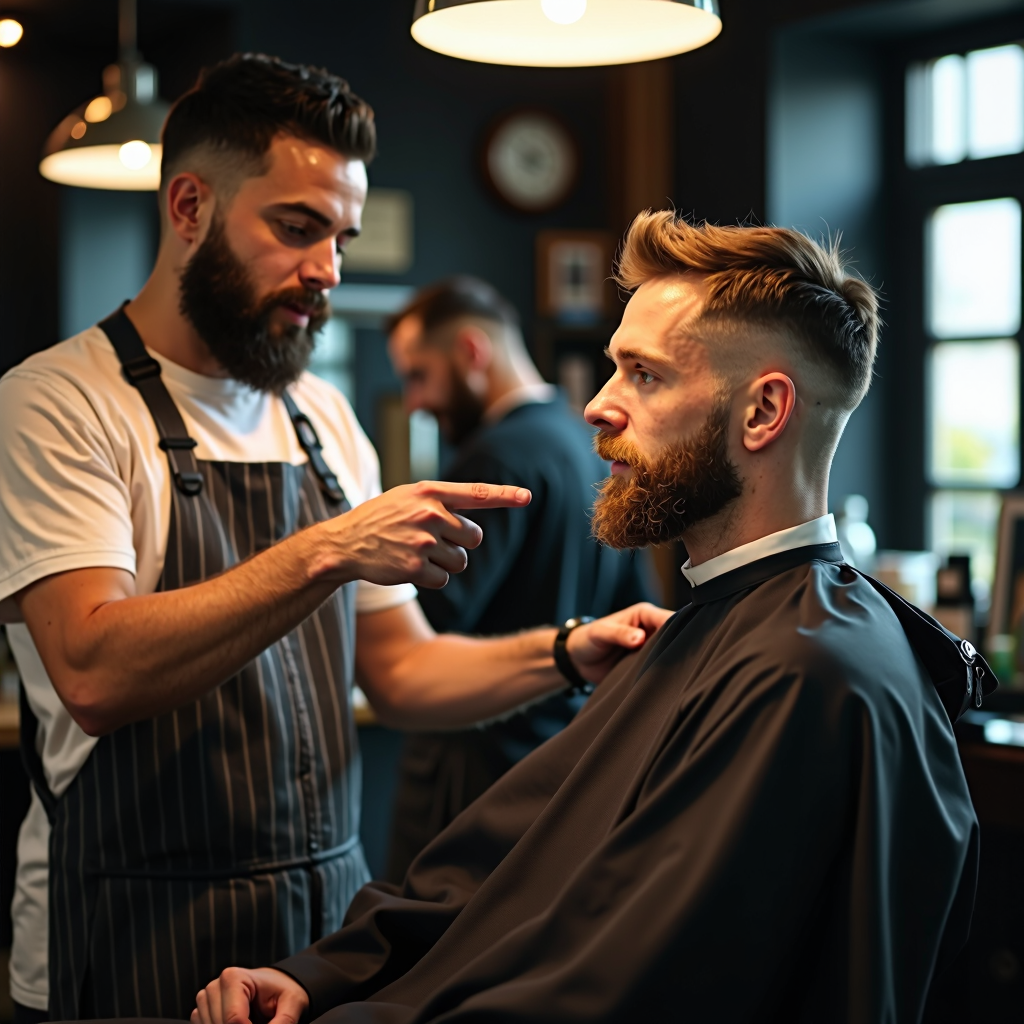
Face Shapes That Work Best with Edgar Haircuts
The Edgar’s distinctive silhouette works better with certain face shapes due to how it frames the face. Understanding your face shape can help you choose the right Edgar variation:
Square Face
Compatibility: Excellent
- The straight fringe complements the angular jawline
- Creates balanced proportions
- Recommended variation: Classic Edgar or Textured Top Edgar
Oval Face
Compatibility: Very Good
- The most versatile face shape for an Edgar
- Balanced proportions work well with the geometric cut
- Recommended variation: Any Edgar style works well
Round Face
Compatibility: Good with modifications
- The sharp lines can add definition to softer features
- High fades help elongate rounder faces
- Recommended variation: High Fade Edgar or Disconnected Edgar
Heart-Shaped Face
Compatibility: Fair, needs adjustment
- Can make a wide forehead appear wider
- Recommended variation: Asymmetrical Edgar or Longer Fringe Edgar to break up width
Diamond Face
Compatibility: Good
- Sharp cheekbones complement the geometric style
- Recommended variation: Mid Fade Edgar or Edgar with Line Up
Long/Rectangular Face
Compatibility: Challenging but workable
- Can make the face appear longer
- Recommended variation: Low Fade Edgar or Edgar with Designs to add width
Triangular Face (wider at jaw)
Compatibility: Moderate
- Can balance a heavier jawline
- Recommended variation: High Fade Edgar or Textured Top Edgar
Face Shape Comparison Chart
| Face Shape | Compatibility | Best Edgar Variation | Why It Works |
|---|---|---|---|
| Square | ★★★★★ | Classic Edgar | Complements angular features |
| Oval | ★★★★★ | Any variation | Versatile proportions |
| Round | ★★★★☆ | High Fade Edgar | Adds structure |
| Heart | ★★★☆☆ | Asymmetrical Edgar | Breaks up forehead width |
| Diamond | ★★★★☆ | Mid Fade Edgar | Complements cheekbones |
| Long | ★★★☆☆ | Low Fade Edgar | Adds width to sides |
| Triangular | ★★★★☆ | High Fade Edgar | Balances wide jawline |
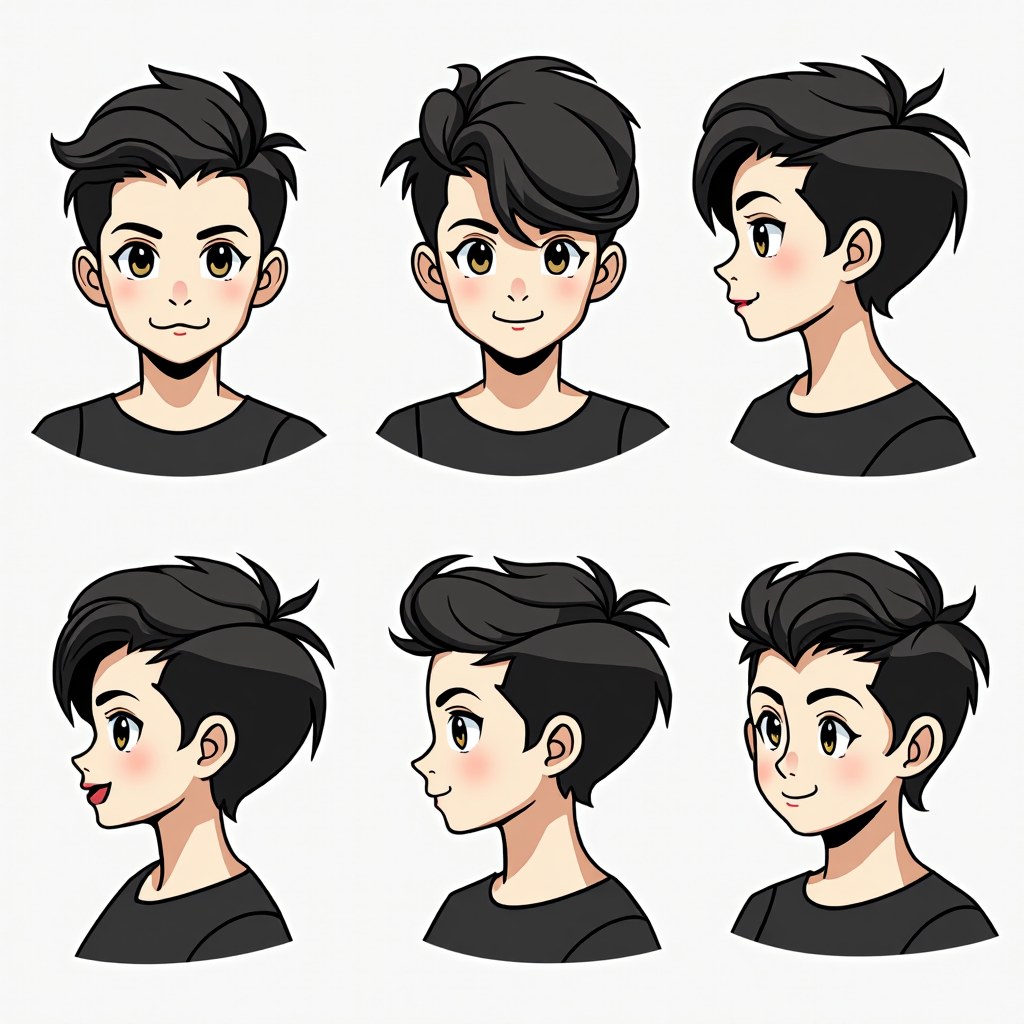
Why It’s Trending in 2025
Recognized as one of 2025’s top men’s hair trends, the Edgar is praised for its striking, minimalist look.
The style’s resurgence roots in retro ’90s aesthetics like bowl cuts, now reimagined in streetwear-inspired fashion.
It symbolizes youthful expression, especially in Mexican‑American and Gen Z communities—sometimes viewed as provocative or countercultural.
Styling an Edgar Haircut at Home
Maintaining that fresh-from-the-barber look requires proper styling techniques and the right products:
Essential Styling Products
- Pomade – Provides medium to strong hold with some shine, ideal for classic Edgar styles
- Water-based options wash out easily
- Oil-based provides stronger hold but is harder to wash out
- Hair Wax – Creates texture with a matte finish, perfect for textured Edgar variations
- Offers flexible hold that can be restyled throughout the day
- Works well for messier interpretations of the Edgar
- Styling Clay – Provides strong hold with a natural finish
- Great for thicker hair types
- Helps maintain the structured shape of the Edgar
- Hairspray – Use as a finishing product to lock the style in place
- Ideal for humid environments or all-day wear
- Choose light to medium hold for more natural movement
Step-by-Step Styling Guide
- Start with freshly washed, towel-dried hair (slightly damp)
- Apply a pea-sized amount of your chosen product to your palms and rub hands together
- Distribute product evenly through your hair, focusing on the top and fringe
- Use a fine-tooth comb to create the straight line across your forehead
- For the classic Edgar: Comb the fringe straight down and forward
- For textured variations: Use fingers to add separation and texture after combing
- Use a blow dryer on low heat to set the style if needed
- Apply a small amount of additional product to refine details
- Finish with light hairspray if you need extra hold
Essential Tools
- Fine-tooth comb – Creates the precise, straight fringe
- Wide-tooth comb – Better for textured top variations
- Small round brush – Helps with styling if you have a longer top
- Blow dryer – Optional but helps set the style
- Hair clips – Useful for sectioning while styling longer Edgar variations
Common Styling Mistakes to Avoid
- Using too much product – Creates a greasy, heavy look
- Styling completely dry hair – Makes product distribution uneven
- Neglecting the back and sides – Remember to smooth down any stray hairs
- Combing at the wrong angle – The fringe should be combed straight down
- Using the wrong product for your hair type – Thin hair needs lighter products, thick hair needs stronger hold

Maintenance and Upkeep
The Edgar haircut requires consistent maintenance to preserve its distinctive shape and clean lines:
Touch-Up Schedule
- Optimal frequency: Every 2-3 weeks
- Fade maintenance: Every 1-2 weeks for skin fades
- Fringe trim: Every 3-4 weeks to maintain the straight line
- Complete restyle: Every 6-8 weeks
Daily Maintenance Routine
- Morning rinse – Even without shampooing, rinse and reset your style
- Shampoo schedule – 2-3 times per week (over-washing can strip natural oils)
- Conditioning – Use lightweight conditioner to keep top hair healthy
- Quick style refresh – Keep a small amount of product at work/in your bag for touch-ups
Product Recommendations for Maintenance
- Clarifying shampoo (once weekly) – Removes product buildup
- Moisturizing shampoo (1-2 times weekly) – Cleans without stripping oils
- Lightweight conditioner – Maintains health of longer top hair
- Scalp scrub (bi-weekly) – Keeps faded areas healthy and prevents ingrown hairs
- Hair tonic – Refreshes style between washes
Troubleshooting Common Issues
| Problem | Solution |
|---|---|
| Fringe losing shape | Use stronger hold product or try hairspray |
| Frizzy top section | Apply anti-frizz serum before styling |
| Fade growing out unevenly | Keep touch-up razor for emergency fixes |
| Product buildup | Use clarifying shampoo weekly |
| Cowlicks disrupting the fringe | Blow dry on low heat while combing to train hair |
| Ingrown hairs in fade area | Use post-shave toner with salicylic acid |
Edgar Haircut Variations for Different Hair Types
The Edgar can be adapted to work with various hair textures and types. Here’s how to make it work for your specific hair:
For Straight Hair
- The most traditional canvas for an Edgar
- Holds the clean lines naturally
- Works with all Edgar variations
- Styling tip: Lighter hold products are usually sufficient
For Curly Hair
- Requires texturizing to remove bulk
- The fringe will appear shorter when dry due to curl shrinkage
- Consider a slightly longer fringe to account for shrinkage
- Best variations: Curly Edgar, Textured Top Edgar
- Styling tip: Use curl-enhancing cream before styling product
For Wavy Hair
- Can create an interesting textured fringe
- May require straightening for a classic Edgar look
- Natural waves can add dimension to longer top variations
- Best variations: Wavy Edgar, Messy Edgar, Textured Top Edgar
- Styling tip: Scrunch with salt spray for enhanced wave pattern
For Coarse Hair
- Holds structure extremely well
- May require more aggressive texturizing
- Strong-hold products recommended
- Best variations: Classic Edgar, Edgar with Line Up, High Fade Edgar
- Styling tip: Apply product to damp hair for better distribution
For Fine Hair
- Can appear flat without proper product
- Consider more textured versions for added volume
- Use volumizing products at the roots
- Best variations: Textured Top Edgar, Messy Edgar
- Styling tip: Blow dry after applying volumizing mousse
For Thinning Hair
- Shorter top variations work better
- The structured nature can help disguise thinning areas
- Matte products create the appearance of fuller hair
- Best variations: Short Fringe Edgar, Textured Top Edgar
- Styling tip: Use thickening spray before styling
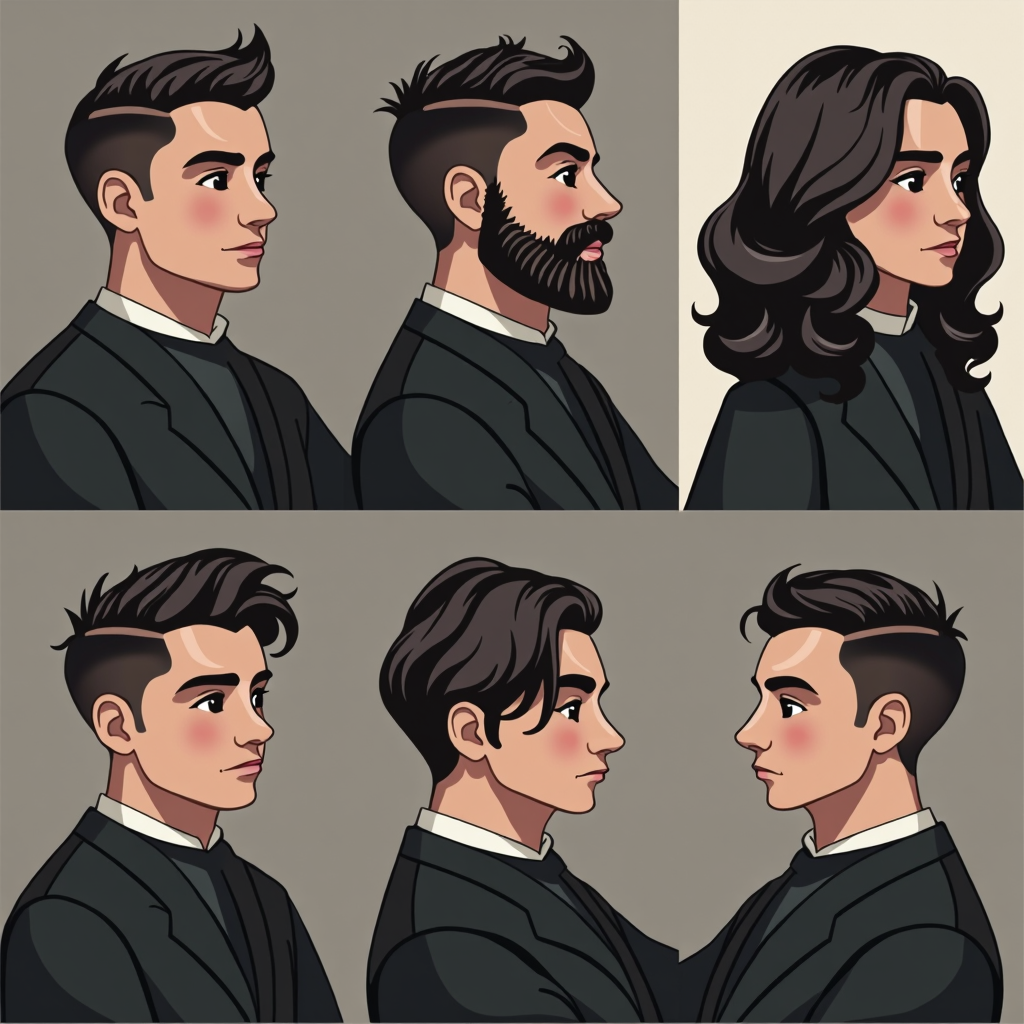
Pros and Cons of Getting an Edgar Haircut
Before committing to an Edgar, consider these advantages and potential drawbacks:
Pros
- Bold statement style – Instantly recognizable and fashion-forward
- Works for various ages – Can be adapted for teens through adults
- Frames the face – Highlights eyes and facial features
- Versatile base – Can be modified with numerous variations
- Low maintenance daily styling – Once cut properly, relatively easy to style
- Cooling in warm weather – Faded sides keep you cooler
- Works well with facial hair – Complements beards and mustaches
- Distinctive silhouette – Stands out from more common haircuts
Cons
- Frequent maintenance required – Needs regular touch-ups to maintain shape
- Not universally flattering – Works better for certain face shapes
- Growing out phase is awkward – Difficult transition to other styles
- May not work in conservative environments – Can be perceived as too trendy
- Requires specific styling products – Additional expense
- Limited styling versatility – The defining elements limit day-to-day changes
- Fade maintenance – Clean sides require frequent trimming
- Not ideal for all hair types – Particularly challenging for very curly or very fine hair
Time Commitment
- Initial cut: 30-45 minutes
- Touch-ups: 15-20 minutes
- Daily styling: 5-10 minutes
- Monthly maintenance time: 1-2 hours total
Cost Considerations
- Initial cut: $25-$50 (varies by location and barber expertise)
- Touch-ups: $15-$30 every 2-3 weeks
- Styling products: $15-$30 per product, lasting 1-3 months
- Annual maintenance cost: Approximately $500-$1,000

FAQs About Edgar Haircuts
How much does an Edgar haircut cost?
The cost of an Edgar haircut typically ranges from $25 to $50 for the initial cut, depending on your location and the barber’s expertise. Higher-end barbershops in urban areas may charge $50-$75, while touch-ups between full cuts usually cost $15-$30. If you add custom design elements or line work, expect to pay an additional $10-$20.
How long does an Edgar haircut take to grow out?
The Edgar haircut takes approximately 2-3 months to fully grow out, depending on your hair growth rate. The fade portions grow out relatively quickly, becoming noticeably longer within 2-3 weeks. The signature fringe takes longer to grow past the eyebrows, usually requiring 6-8 weeks. For a complete transition to a different style, plan for 3-4 months of growth and strategic trimming to reshape.
Can I get an Edgar haircut with a receding hairline?
Yes, you can get an Edgar haircut with a receding hairline, but modifications may be necessary. Consider an asymmetrical fringe that’s slightly longer on one side or a textured fringe rather than a blunt one. Work with your barber to adapt the fringe to complement your hairline rather than draw attention to recession. Some men with receding hairlines opt for a high fade Edgar that blends with the natural hairline.
What’s the difference between an Edgar cut and a Caesar cut?
The main differences between an Edgar cut and a Caesar cut are:
Fringe length: Edgar features a longer, blunter fringe; Caesar has a shorter, more textured fringe
Sides: Edgar typically has modern fade techniques; Caesar traditionally has shorter clipper-cut sides without fades
Structure: Edgar has a more geometric, precise shape; Caesar is more natural and soft
Texture: Edgar is generally blunt-cut; Caesar is more texturized throughout
Origins: Edgar emerged from Latin American communities; Caesar has ancient Roman origins
Does an Edgar haircut work for all hair colors?
Yes, an Edgar haircut works with all hair colors, but the visual impact varies. Darker hair creates more contrast with the skin in the faded areas, making the style’s lines appear sharper. For blonde or light hair, the contrast is more subtle, which can create a softer look. Gray or silver hair can create a striking modern appearance with an Edgar cut. For maximum impact with lighter hair, consider a skin fade to create greater contrast.
How do I know if an Edgar haircut will suit me?
To determine if an Edgar will suit you, consider:
Your face shape (square and oval faces typically work best)
Hair texture (straight to wavy hair adapts most easily)
Lifestyle (requires regular maintenance)
Personal style (works best with casual to streetwear aesthetics)
Try a virtual hair app that lets you preview the style before committing
Is the Edgar haircut appropriate for professional settings?
The appropriateness of an Edgar haircut in professional settings depends on your workplace culture. More conservative industries (finance, law, corporate offices) may find the standard Edgar too trendy. For these environments, consider more subtle variations like the low fade Edgar or short fringe Edgar. Creative industries generally accept the style easily. When in doubt, opt for a tamer version with a less dramatic fade and slightly textured rather than blunt fringe.
Conclusion
The Edgar haircut has evolved from its cultural roots to become a mainstream style option with remarkable versatility. With 25 variations to choose from, this distinctive look can be adapted to suit many face shapes, hair types, and personal styles.
What makes the Edgar enduring is its ability to be both bold and adaptable. Whether you prefer the classic blunt fringe with high fade or one of the many modern interpretations, the Edgar offers a structured yet customizable option for men looking to make a statement with their hair.
Remember that success with an Edgar cut comes down to three key factors: finding the right variation for your features, communicating clearly with your barber, and maintaining the style with regular touch-ups and proper products.
If you’ve been considering trying an Edgar haircut, 2025 is the perfect time to take the plunge. With its continued popularity and widespread adoption, finding a barber skilled in creating this style is easier than ever.
Have you tried an Edgar haircut? Share your experience in the comments below or tag us in your Edgar photos on social media.
Visit our Pinterest https://www.pinterest.com/haircutvibe/ for more edgar martínez haircut images.
